R. Mark Liebenow's Blog: Nature, Grief, and Laughter, page 6
October 16, 2016
Brother Sun, Sister Moon
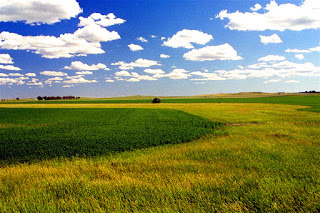 The feast day of Francis of Assisi was earlier this month. Clare’s feast day is in August. In this harvest season, as I drive through the countryside past fields of soybeans and corn, I think of Clare and Francis and their great love for nature and their mutual respect for each other. They were equal partners, even though Francis gets most of the press.I see them running through the meadows of their scenic Umbrian countryside, robes flapping around them as they shout words of joy to each other, praising the glorious flowers, singing birds, and the glowing fields of wheat. In what would come to be known as his Canticle of the Creatures, Francis speaks of the beauty and presence of the natural world and all its creatures. He gives thanks for his steady companions, brother Sun and sister Moon.
The feast day of Francis of Assisi was earlier this month. Clare’s feast day is in August. In this harvest season, as I drive through the countryside past fields of soybeans and corn, I think of Clare and Francis and their great love for nature and their mutual respect for each other. They were equal partners, even though Francis gets most of the press.I see them running through the meadows of their scenic Umbrian countryside, robes flapping around them as they shout words of joy to each other, praising the glorious flowers, singing birds, and the glowing fields of wheat. In what would come to be known as his Canticle of the Creatures, Francis speaks of the beauty and presence of the natural world and all its creatures. He gives thanks for his steady companions, brother Sun and sister Moon.For years, Francis and Clare have been my sun and moon. In the background, I hear Donovan singing during this scene in the 1972 Zeffirelli movie. That’s neither here nor there, but why does life seem richer when there’s a soundtrack? Except that Francis began this poem not when he was out in the fields being inspired by nature. The words came when he was seriously ill and lying in bed. How was he able to sing praises of joy when he felt so miserable that he couldn't get up? When I’m sick, praise is the last thing on my mind. I am truly a horrible patient.
Already exiled from his home and family, after days of being cold and shivering in a small hut built by Clare and her sisters, perhaps the words began to come into his consciousness when a single ray of sunshine warmed his skin, like the comforting touch of Clare, and as when a friend comes and sits with us to keep us company.
Rather than complain about his suffering, he celebrated this simple pleasure, gave thanks, and looked forward to when he could share again the beauty of Creation with Clare. I wouldn’t be surprised if Clare contributed half of the words.
Published on October 16, 2016 05:57
July 10, 2016
Solace of Nature and Grief
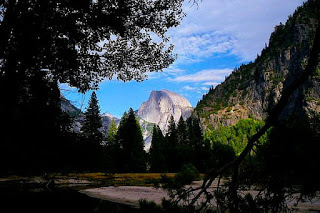 When grief knots me up, I head for nature. Breathing the fresh air of the mountains pulls me out of my funk.
When grief knots me up, I head for nature. Breathing the fresh air of the mountains pulls me out of my funk.Nature demands nothing of me. It accepts me as I am.
Nature goes about its life and provides openings for me to participate as I want. I can sit beside a river for hours and let the sounds of the undulating water soothe my sorrow. I can wander in the forest’s cool shadows when the heat and brightness of the sun become too much. Or I can tromp across a mountain and physically work out my anger and frustrations.
When I met Evelyn, I had one other great love — Yosemite. When she died, I thought I had lost Yosemite, too, because the first time back, six weeks after her death, the trip was a disaster. For twenty years, Yosemite had never failed to inspire me with awe as soon as I entered the valley — iconic Half Dome, snow-capped mountains, green meadows, and waterfalls flowing down around the valley.
It was natural to return when Evelyn died, but that first time back, I ran into our happy memories of being there together. They burned like bonfires, reminding me who was missing. I ended up leaving early because it was too hard to be there.
On the morning I left, I went down to the river before dawn. The valley was still black. As the rising sun peeked over the mountains, it sent a beam of light into the dark forest in front of me and lit up a grove of green aspen across the river. I could see that it was amazing, but I couldn’t feel anything. I knew that I needed to remember this so I took a photograph.
The message I sensed was that I was going to be okay, but I had to be patient and wait in grief’s darkness for the light to reach me. This photo would end up on the cover of my book, Mountains of Light, about hiking through nature to deal with grief.
When I returned to Yosemite later in the year, I was nervous. If I still couldn’t feel the beauty of the landscape, I would leave and never come back. Yosemite would be dead. But as I drove around the bend by Bridalveil Fall, El Capitan rose up to greet me.
That trip I hiked every day from sunrise to sunset. After the first hour on the trail, the chatter of surface thoughts calmed, and I became aware of feelings I hadn’t had time to face. Now I had ten hours on the trail to work through them. Scenic views frequently stopped me in amazement.
Because this was the wilderness, I paid attention to my surroundings. Bears and mountain lions lived here, and occasionally I’d hear something large moving in the forest or see its tracks. I was hiking alone, and the trail often traced the edge of a cliff. Once I was so wrapped up in my thoughts that I failed to notice the trail had turned and stepped over the edge. I was able to stop my slide by grabbing on to bushes.
As I watched nature carefully, I saw how it dealt with grief — nature mourns its deaths for a moment, and then moves on. I also noticed that nature was constantly changing, even mountains made of granite. Rockslides continue to come down and bury trails and animal habitats. Mirror Lake fills in with sediment brought down by the river and becomes a meadow. Each spring the river floods and adjusts its course.
Our lives are always changing, too, because people we love continue to die and take part of us with them. Each loss tears another piece out of the fabric of our universe. Being in nature allowed wonder to come back into my life.
In those early days when I felt battered by grief, hiking to the top of a mountain gave me a jolt of energy. Looking over hundreds of miles of wilderness, I felt connected to something more powerful than death.
No matter what happens to me now, I know that I can always return here and nature will be waiting to welcome me home.
Published on July 10, 2016 05:37
June 12, 2016
Sacredness of Nature
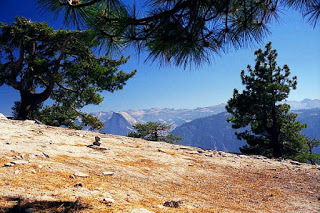 We have lost intimacy with nature.
We have lost intimacy with nature. Most of us don’t work outside. We live in cities where our environments are climate-controlled. We no longer can tell what the weather will do by going outside and looking. We have to consult our smart phones and check the weather websites.
The wilderness is a wild place, archaic, and exists on the edge of what we understand. But if we do not venture into it, and hike into the hesitancy of what we fear about nature, then we will never understand the wilderness that lives inside us. This is no app for this.
Many of us also feel spiritually energized outdoors, although in an unspecified way. Some of us are spiritual, but not religious. Or if we’re religious, we’re not organized. Or if we’re religious and organized, we likely to meet inside a building where we can’t see what nature is doing.
When he was hiking around Yosemite, John Muir was stunned by the amazing beauty of the Sierra Nevada Mountains everywhere he looked, and he felt that he never worshipped so well as when he was outdoors. Like many of the early conservationists, Muir was brought up in a religious household and was fluent in the language of the Judeo-Christian Bible. But it wasn’t until he was in nature that he felt the power of the Almighty being spoken about.
Nature has been sacred to many people for a long time. The ancient Chinese regarded the tops of mountains as where the gods lived. Mt. Olympus was home to the gods of the Greeks. Cultures often put their shrines for deities on the top of mountains where humans and the gods could meet and converse. Some cultures, like the Japanese, honor the gods by climbing the mountains and paying their respects to the nature spirits along the way.
There is a long tradition of nature poets in Asian cultures, like Basho who recorded his insights into nature and spirituality as he hiked around Japan. Influenced by this tradition, Gary Snyder and Kenneth Rexroth are two of my favorite poets who wrote about the Sierra Nevada.
In Christianity, the desert fathers and mothers of the 3rd century went into the wilderness of the desert where there were few distractions from living a life of prayer. There they discovered the unexpected beauty that thrives in a dry environment and found the God of the wilderness.
In Ireland, Celtic monks and nuns of the 6th century looked for isolated places along the rugged Atlantic coast where they could live a life of simplicity and devotion. The wildness of the land helped them understand the wildness of God.
From what I’ve read, the Ahwahnechees of Yosemite didn’t feel the need to climb the tallest mountains in the Sierra Nevada. To them, mountains represented the power of mystery, something to learn from and honor. Mountains were not something that needed to be conquered by climbing.
I go to Yosemite to get away from the noise and rush of city life. In the highlands I am alone with the animals and birds and learn from them. I also go to experience the Other, the force that moves through every living thing.
When I hike in the wilderness, I find myself home.
Published on June 12, 2016 14:24
June 5, 2016
Intimacy With Nature
 I hike alone in Yosemite because I love the silence.
I hike alone in Yosemite because I love the silence.I love the presence of nature and want to be present to it. I hike alone to lose myself in the Otherness of the outdoors, and find myself home. The Ahwahnechees believed that humans are kin with the animals and birds, the mountains, rivers, and the sky. How can I come into nature and not pay attention to the members of my family?
To perceive what nature is and what it is doing, I need to involve all my senses. Of course, I want to be aware of large, predatory animals moving through the woods, but I also want to see beyond the generalities and notice their specifics, how they look, smell, and feel.
For example, once I headed out to look at Half Dome in the early dawn. I was so focused on getting a good view of the dome with the sun rising behind it, that I didn’t notice the coyote resting in the meadow, a small group of deer on the far side under the oak trees, and a harlequin duck drifting along on the current of the Merced River.
I want to look at individual trees, and see how they differ from each other — feel the roughness of their bark, the shape of their leaves, and if they have cones, nuts, or seeds. I want to watch the interaction between the river and its bank, and see what creatures live there. I want to listen to the quiet sounds of the meadow and locate the vole walking under the leaves and making them twitch.
When I am physically connected to the landscape, I will sense, before I go around the bend in the trail, whether the land is going to rise up or go down.
As I’m hiking, I try not to focus on anything but keep my eyes open and take it all in, trying to be aware of everything on the land and in the sky, including movement on the periphery of my vision.
One day I was hiking in the highlands behind Eagle Peak. It was hot and I was breathing with my mouth open because I was not used to hiking at 8000 feet. At home I live at an elevation of 34 feet above sea level, and I was out of breath. I began to pick up a variety of scents I hadn’t noticed earlier. Closing my mouth, I sniffed, but the scents were faint. Opening my mouth, I breathed in again, and this time I picked up the scents of pine trees, granite, and moisture from a nearby marsh.
I resumed hiking and was practicing my discovery when I picked up the smell of something musky. I knew it was an animal, but I didn’t know whether it was a coyote, bear, or mountain lion. I didn’t know whether to continue hiking or back away. You are supposed to do one for a bear and the opposite for a lion. Unsure about what to do, I stood still and waited. A minute later a deer walked calmly out of the woods and crossed the path fifty feet ahead me.
Each area of Yosemite smells and sounds different — the heady aroma of the oak trees by Rixon’s Pinnacle, the granite and crisp smells of the cascading water at Happy Isles, the dry sleepy warmth of Sentinel Meadow, the cool pine-scented forest in Tenaya Canyon.
Does it matter if I physically connect with the land? It does because while beauty attracts me to nature, physical contact is the beginning of a relationship. Nature then moves from being an accumulation of data, of observations chemical reactions and geological forces, to being alive, and intimacy begins. In nature’s storms, I learn her moods and celebrations. As I hike and camp, she learns mine.
When I know the scent of her hair, the touch of her meadows, the sounds of her voice in the river, then I move closer to my beloved.
Published on June 05, 2016 09:12
May 29, 2016
Hiking With Nature Alone
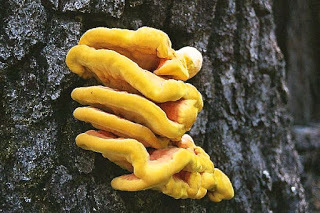 When I hike by myself I’m not alone. Nature goes with me.
When I hike by myself I’m not alone. Nature goes with me. Nature is a companion who walks at my pace, and hides surprises along the trail, like yellow fungus on the backside of a tree. Sometimes nature talks so loudly that I can’t hear myself think, like when I’m standing at the bottom of a waterfall and feel the earth vibrate from the pounding water. Sometimes it murmurs so quietly that I have to get down on my knees and lean in close to hear what it’s saying.
I can also hike on and on without ever stopping, taking in scene after scene until my senses overload and my eyes glaze over from the onslaught of stunning images.
But I have a problem. I want to see everything. I start at dawn on a hike that I’ve mapped out to maximize the number of scenic destinations I can fit in and still get back to camp before it gets dark. This means that I don’t leave any wiggle room to explore a ten-foot waterfall I find that I didn’t know existed.
The rock climbers are helping me slow down and enjoy being in the moment. Most of them don’t value the speed climbers who use a stopwatch to see how fast they can get up the face of El Capitan. My friends feel that climbing is an art. Speed climbing, to them, is just a stunt.
In my early days in Yosemite, I would hike as fast as I could to Nevada Fall to see if I could beat my previous record. How well I did told me what kind of physical shape I was in. Yet I couldn’t tell you anything about the patch of red flowering something I saw on the hillside by the bridge, other than it was red. Were they flowers or tiny leaves?
Once I hiked to the top of Yosemite Falls, crossed over the bridge, and was following the trail along the edge of the canyon toward North Dome. My plan was to have lunch there, wave at the people on the top of Half Dome across the valley, who would wave back in a dome-to-dome greeting, and come back down in time to cook a late dinner.
But soon after crossing over Yosemite Creek and passing the Lost Arrow, a view along the rim enchanted me. So I stayed there, watching the valley for a couple of hours, especially the ravens who soared up on circling thermals of air, went down, and circled back up again. It was a delightful day. I didn’t accomplish anything, but I had an experience.
I want my relationships to move like this, to be spontaneous and not planned out for the next decade, which never works out, anyway. I want to do work that nurtures me as much as I nurture it. I don’t want to get to the end of life and realize that I haven’t lived at all, just checked items off my schedule. I want people to be really sad when I die, and not just sigh and cross my name off their holiday card list.
Nature meets us where we are, and encourages us to go further. When we listen, we hear the wilderness within us respond.
*
“Waiting for Owls,” a short reflection published by River Teeth Journal. http://www.riverteethjournal.com/blog/2016/02/08/waiting-for-owls-
Published on May 29, 2016 04:59
May 22, 2016
The Presence of Place
 When I go to Yosemite, I want to be alone with nature. As soon as I'm within the valley walls, a deep sense of peace settles over me. Every granite dome and peak looks glorious glowing in the sun. Even a nondescript spot on the valley wall below Yosemite Point is intricate with details, which I notice only because it is framed by tree branches where I'm momentarily standing.
When I go to Yosemite, I want to be alone with nature. As soon as I'm within the valley walls, a deep sense of peace settles over me. Every granite dome and peak looks glorious glowing in the sun. Even a nondescript spot on the valley wall below Yosemite Point is intricate with details, which I notice only because it is framed by tree branches where I'm momentarily standing. People travel to natural places in search for what is missing in their lives.
When I go to Yosemite, I’m constantly hiking and listening until I’m overwhelmed by the grandeur of nature. I watch the everyday life of the mountains until I feel their presence, because then I can feel the yearning of my heart.
I try to walk slowly and notice everything around me. I try to move at the pace of nature. I try to be mindful of what is present in each moment instead of hurrying as fast as I can from one inspiring view to the next, which is a problem because there are so many vistas and I want to fit them all in before I have to leave. Often I have to remind myself to slow down. Whenever thoughts about the wilderness rise, I dawdle over them to see where they are leading.
It is helpful to be in a place like Yosemite that is both simple in focus and spectacular in presentation. I value the simplicity because it is direct, and so much of life is needlessly complicated. It’s just nature and me, with no buffers or filters in between. I value the spectacular because it pulls me out of my quiet reserve and inspires me to shout and dance with excitement, which I don’t do often enough.
When I’m here, my focus is completely on nature, and I try as best I can to understand. There are no people of the land, no cultures left to guide me with their insights or interpret what I’m experiencing.
When I need to rest my eyes from the magnificent mountains around me, I watch the ordinary world of the deer in front of me nibbling acorns on the ground, and I am moved to my depths. This land, this valley, this place has existed unchanged for thousands of years.
What I discover in nature opens me to mystery and wonder. As I deepen this relationship, I begin to understand why.
Published on May 22, 2016 05:29
May 15, 2016
Morning Fog
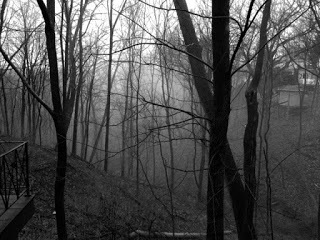 Before dawn, fog moves up from the river, through the forest, and fills the woods behind my house. It’s a bit gloomy. Yesterday we had sunshine, and the brightness brought a surge of energy. Today, not so much. I want to put on a sweater, sit in a chair by the window, drink hot tea, and read a book about someone else’s adventures.
Before dawn, fog moves up from the river, through the forest, and fills the woods behind my house. It’s a bit gloomy. Yesterday we had sunshine, and the brightness brought a surge of energy. Today, not so much. I want to put on a sweater, sit in a chair by the window, drink hot tea, and read a book about someone else’s adventures.As the sun rises, the white particles of mist turn and twirl on the whims of the breeze. It looks like a cloud of fine snow is dancing.
Then I notice.
The three trees are magnificent, and stand silently like sentinels. Or like Sherlock Holmes, Dr. Watson, and Mrs. Hudson. Mystery is afoot in the woods.
Sometimes I need a fogged-in day to see what is in front of me.
Most of the time, I take in everything all at once in my constant rush to get work done. Specificity becomes an opaque blur. It’s the difference between mingling at a party, talking to everyone, and sitting on the side with one person, watching that person’s eyes, and seeing in them the history and struggles behind what is being spoken.
Listen to the spaces between the words.
We think we want to understand everything. We want to believe that more knowledge will bring us more happiness. But knowledge is not understanding, nor wisdom, nor compassion, and many things we do not want to know. Too many problems would overwhelm us.
We like the illusions that allow us to live happy, protected lives. We do not want to know how many people are hungry today because family farms have been paved over with highways and shopping malls, how many animals are being abused in food factories so that we can have cheap meat, or how much of the wilderness is being bulldozed and fracked in the name of making money. Destruction does not build integrity or community.
What we want, what each of us really do want, no matter how many illusions we hold on to to prop us up, is to experience one moment each day that is utterly real, a moment that gives us vision, hope, a taste of the transcendent. We want to connect to people, and to stand up against injustice. We want to notice what is going on in the world in front of us and make it a little better. Soon the fog will dissipate into the warmth of the rising sun, but I will remember.
We live for these moments of clarity.
But if we do not slow down and pause when these moments come, then we will never see the trees, the dancing of the fog, or each other.
Published on May 15, 2016 05:12
May 8, 2016
Walking
Out walking this morning, I’m shocked to find that nature has gotten along just fine without me. This time I’m not heading into the woods. I’m walking on the streets of my neighborhood.
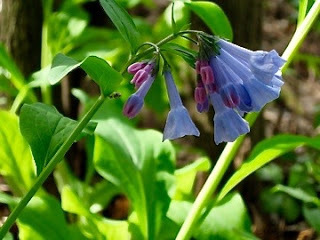 I haven’t been outside for a week, not really, being busy with tasks inside the house. I don’t count driving to the store as being outdoors. The car is just a mobile room.
I haven’t been outside for a week, not really, being busy with tasks inside the house. I don’t count driving to the store as being outdoors. The car is just a mobile room.
In the meantime, the leaves have popped out on trees and converted their empty branches to umbrellas of thick green. Bushes and plants are flowering, and birds are filling the air with chirps, chortles, whistles, and songs.
As my walking settles into a rhythm, my breathing speeds up to match the pace of my legs. My thoughts slow down to move at the pace of my breathing. Mind and body reconnect, unlike when I sit at my desk and work with my mind, ignoring the needs of my body until I stand up stiff, hungry, and dehydrated.
I walk without any destination. There are no stores or cafes in my neighborhood. And I walk without worrying if I’m moving fast enough for this to count as exercise.
I try not to think about the projects waiting for me at home, and just walk, noticing what catches my attention, what thoughts show up on their own, what feelings surface, and let them flow by. I walk free of everything but what is in this moment, and I move at whatever speed feels right.
As I walk, I loosen the ligaments of my brain that I’ve strapped down to get work done. I let thoughts and feelings run and play. I marvel at the balanced architecture of an oak tree, bend down and examine the pink and lavender colors of Virginia bluebells, see a hollow at the base of a tree and imagine a hobbit or a Keebler elf living there. When I notice a squirrel watching me, I stare at it to see which one of us blinks first.
It’s irresponsible, I know, to walk with no purpose other than joy. But I do. People nod as I pass by, wondering where I’m going and why I’m walking. They have no clue that I’ve escaped and on the loose.
 I haven’t been outside for a week, not really, being busy with tasks inside the house. I don’t count driving to the store as being outdoors. The car is just a mobile room.
I haven’t been outside for a week, not really, being busy with tasks inside the house. I don’t count driving to the store as being outdoors. The car is just a mobile room.In the meantime, the leaves have popped out on trees and converted their empty branches to umbrellas of thick green. Bushes and plants are flowering, and birds are filling the air with chirps, chortles, whistles, and songs.
As my walking settles into a rhythm, my breathing speeds up to match the pace of my legs. My thoughts slow down to move at the pace of my breathing. Mind and body reconnect, unlike when I sit at my desk and work with my mind, ignoring the needs of my body until I stand up stiff, hungry, and dehydrated.
I walk without any destination. There are no stores or cafes in my neighborhood. And I walk without worrying if I’m moving fast enough for this to count as exercise.
I try not to think about the projects waiting for me at home, and just walk, noticing what catches my attention, what thoughts show up on their own, what feelings surface, and let them flow by. I walk free of everything but what is in this moment, and I move at whatever speed feels right.
As I walk, I loosen the ligaments of my brain that I’ve strapped down to get work done. I let thoughts and feelings run and play. I marvel at the balanced architecture of an oak tree, bend down and examine the pink and lavender colors of Virginia bluebells, see a hollow at the base of a tree and imagine a hobbit or a Keebler elf living there. When I notice a squirrel watching me, I stare at it to see which one of us blinks first.
It’s irresponsible, I know, to walk with no purpose other than joy. But I do. People nod as I pass by, wondering where I’m going and why I’m walking. They have no clue that I’ve escaped and on the loose.
Published on May 08, 2016 06:36
May 1, 2016
Change Your Neighborhood
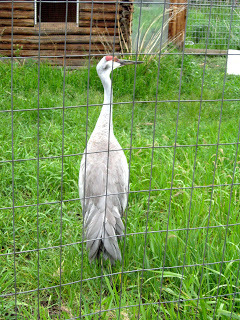
If we are afraid of being in the woods by ourselves, if we don’t feel energized by hiking through the mountains or walking on the beach of an ocean, then we have cut ourselves off from one of our main sources of wisdom.
When being in nature makes us feel alive, when we have a special place that renews our spirit, then we will work to protect it. This is where our ecology begins.
Our doing something makes a difference, even if it doesn’t seem like much. Imagine if everyone stood up and protected their sacred place in nature. The one percent standing up and protecting a small area of nature makes a difference. No, not that one percent.
An experiment with the particle accelerator in Batavia, Illinois found there was a one percent difference between the number of muons and antimuons that arise from the decay of particles known as B mesons. This one percent more of matter than antimatter is the reason why we don’t explode into smithereens. You see, matter and antimatter don’t get along.
Trying to save the natural world can seem like such an enormous task that we give up before we try. How do I stop corporations from digging up and fracking the land into piles of waste and polluted lakes of slurry? By trying. We can save parts of nature where we live, whether this is blocking the company that picks up our trash from also dumping toxic waste into our landfill, creating a free recycling program, or convincing people to stop buying plastic water bottles and using plastic grocery bags.
Aldo Leopold restored a denuded sandy area near the Wisconsin River that was once a thriving prairie filled with wildlife and birds. His efforts led to the formation of The Wilderness Society and the idea that it’s not too late to undo much of the damage that we’ve done to nature. Inspired by his work, others started their own projects, like the effort to preserve sandhill cranes nearby in Baraboo, Wisconsin.
In practical terms, what I do on the local level won’t do much to slow global warming or save the glaciers from melting. Not by itself. But when my one percent is added to your one percent and to the one percent of our friends, then we begin to affect larger matters. By working with our neighbors, who may not agree with us on points of public policy, but who trust us because we help them with chores, we help change their minds and they begin to do their one percent.
If I change my neighborhood, and you change your neighborhood, and a hundred others change their neighborhoods, a thousand people will see what we did, and they will make their changes, and then progress begins.
Published on May 01, 2016 06:17
April 24, 2016
Boundaries

(photo of the top of Yosemite Falls)
We all have boundaries that we don’t want to cross, whether they are emotional, physical, or mental, because we get comfortable where we are.
Taking risks and crossing physical boundaries isn’t a problem for me. Late one October, I traveled to Yosemite anticipating a week of dry, cool, but sunny weather. Perfect for hiking through the glories of fall. One morning I came out of my tent to find that winter had moved in and the mountains around me had turned white. I went on a hike to the top of Yosemite Falls because I wanted to see what this looked like.
*On the switchbacks going up the canyon wall, snow begins to appear at the 6000-foot elevation. It gets deeper the higher I go, making the upward hike slippery and a little dicey.
Higher up, the trail has iced over. I dig my feet into the snow on the sides and waddle the last hundred yards. Three hours after starting out, I reach the top. The snow is a foot deep and undisturbed. I don’t see the tracks of any wildlife, not even the mountain lion that lives up here. At 8,000 feet, whatever sounds arise are quickly hushed by the snow.
My original plan was to head west for the top of El Capitan, but I think the trail going east to North Dome may have less snow. Neither trail is anywhere to be seen, and if there is ice and deep snow here, then it’s likely that the same conditions exist over the length of both trails. I head off anyway, because I do things like this, figuring that if I can see part of the trail now and then, I will be okay. But after twenty minutes of tromping around through snow that is now above my knees, I can’t find either trail.
There are boundaries I should not play with. This may be one of them.
I consider my options. Both trails run along the edge of the valley wall and a slip could be fatal. I could also fall into a snow-filled crevasse, break an ankle, and be buried. It’s unlikely that anyone else will hike up here today. I calculate how much more I can push my luck to make this work.
There is a difference between crossing a boundary and being foolhardy.
Finally I decide that this is as far as I can safely go. I watch Yosemite Creek trickling down, then slide carefully over snow-covered rocks to the lip of Yosemite Falls. Its thin stream flows over the edge like water being poured from a pitcher, unlike the powerful surge and thunderous roar of the waterfall in spring.
I am perched on the boundary between life and death. One wrong move and I cross over. I look up. Stretched out before me are hundreds of square miles of frozen wilderness. I listen to the silence of the dark, slate-blue Sierra Nevada Mountains topped with a blanket of white, and I am in awe of their raw beauty.
Challenging the boundary has opened a door.
Published on April 24, 2016 06:20



